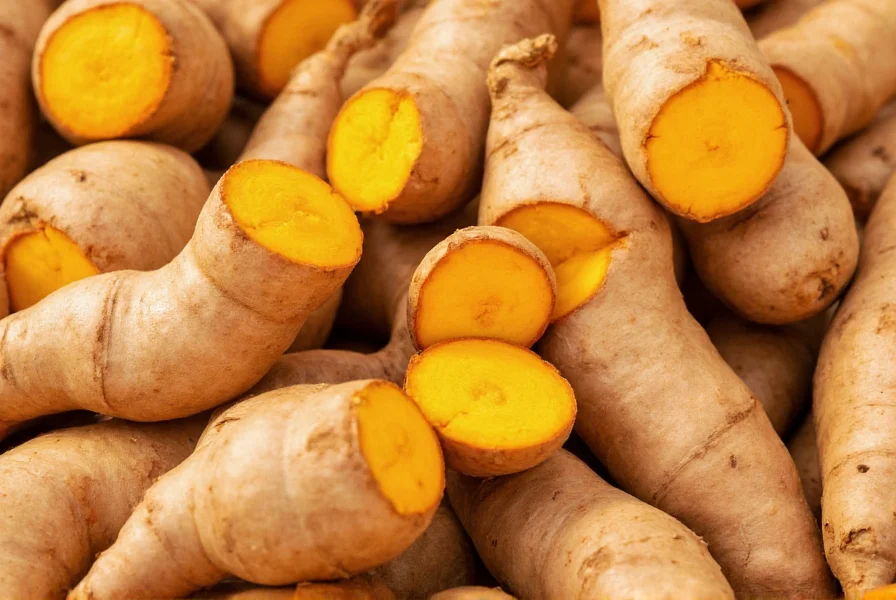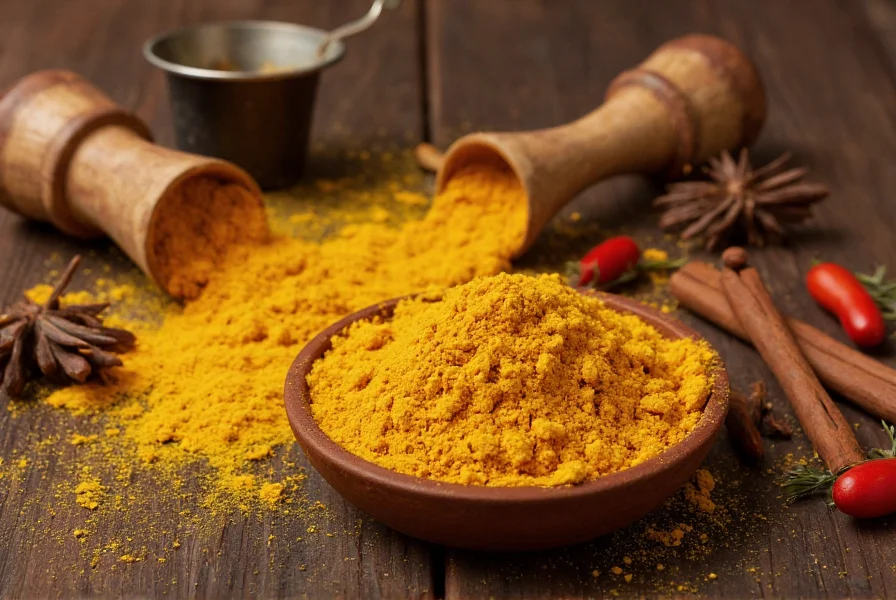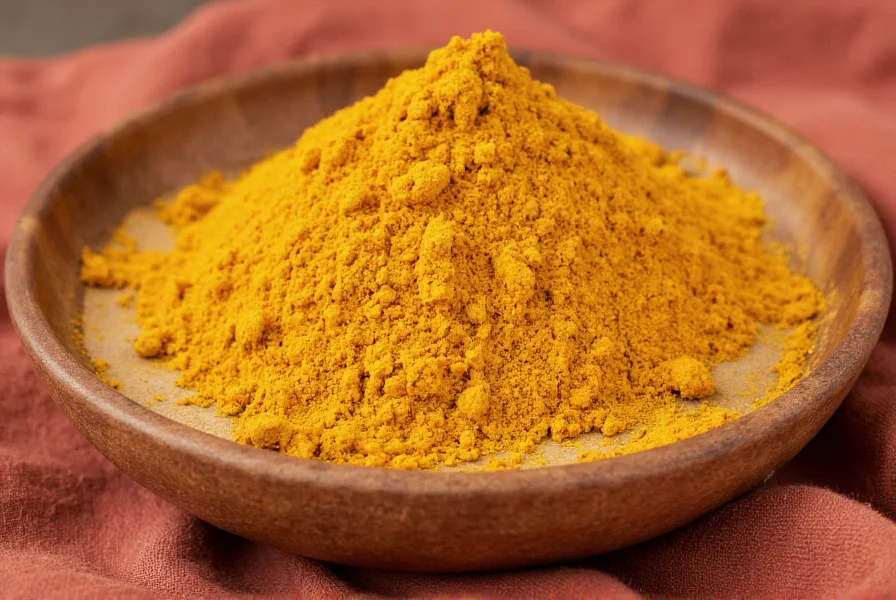Turmeric, scientifically known as Curcuma longa, has been valued for millennia across various cultures not just as a spice but as a symbol with deep significance. This vibrant yellow-orange rhizome belongs to the Zingiberaceae family, sharing botanical roots with ginger and cardamom. Understanding turmeric meaning requires exploring both its literal definition and the rich cultural contexts that have shaped its importance worldwide.
Botanical Definition and Characteristics
Turmeric is a perennial herbaceous plant that grows up to one meter tall, producing clusters of yellow flowers and underground rhizomes. The part commonly referred to as "turmeric" is actually the plant's rhizome, which is boiled, dried, and ground to produce the familiar spice. This rhizome contains curcuminoids, with curcumin being the primary active compound responsible for turmeric's distinctive color and many of its properties.

Etymology: Tracing the Word's Journey
The linguistic history of "turmeric" reveals fascinating cultural exchanges. The word entered English in the 16th century through the Old French terre-merite, which derived from the Arabic kurkum (saffron), ultimately tracing back to the Sanskrit haridrā. Some etymologists suggest the name may have been influenced by the Latin phrase terra merita (meritorious earth), referring to the earth-like appearance of the dried rhizome.
Throughout history, turmeric has been known by various names reflecting its significance:
| Language/Culture | Term for Turmeric | Literal Translation/Meaning |
|---|---|---|
| Sanskrit | Haridrā | "Yellow one" or "remover of impurities" |
| Hindi | Haldi | Derived from Sanskrit haridrā |
| Tamil | Manjal | "Yellow" or "saffron" |
| Arabic | Kurkum | Related to saffron |
| Latin | Terra merita | "Meritorious earth" |
Cultural Significance Across Traditions
Turmeric meaning extends far beyond its botanical definition into the realm of cultural symbolism. In Indian traditions, turmeric holds sacred status and features prominently in religious ceremonies and rituals. The application of turmeric paste in wedding ceremonies symbolizes prosperity, fertility, and purification.
In Southeast Asian cultures, turmeric serves as both a culinary staple and a traditional dye for religious garments. Ancient Javanese manuscripts document turmeric's use in purification rituals dating back to the 10th century. Traditional Chinese Medicine incorporates turmeric as a "warming" herb believed to move qi and blood.
Turmeric in Culinary Contexts
The culinary meaning of turmeric centers on its role as a fundamental spice in many global cuisines. In Indian cooking, turmeric provides both color and earthy flavor to curries, rice dishes, and lentil preparations. Southeast Asian cuisines use fresh turmeric rhizomes in soups, marinades, and traditional medicines.
Chefs worldwide value turmeric for its ability to add vibrant color without overwhelming other flavors. The spice works particularly well with coconut milk, black pepper (which enhances curcumin absorption), and other warming spices like cumin and coriander.

Traditional Practices and Symbolism
Understanding turmeric meaning requires examining its role in traditional practices beyond cooking. In Ayurvedic tradition, turmeric represents purity, prosperity, and healing. The spice features in haldi ceremonies across South Asia, where a paste of turmeric and other ingredients is applied to the skin before weddings.
In some African traditions, turmeric serves as a protective symbol against negative energy. Traditional Indonesian healing practices incorporate turmeric in jamu herbal tonics designed to promote wellness and vitality.
Common Misconceptions About Turmeric
Several misconceptions surround turmeric meaning. Many people confuse turmeric with saffron due to their similar color, though they come from completely different plants. Turmeric provides a more earthy, less floral flavor profile than saffron and is significantly more affordable.
Another common misunderstanding equates turmeric directly with curcumin. While curcumin is the most studied compound in turmeric, the whole rhizome contains numerous beneficial compounds that work synergistically. The full turmeric meaning encompasses this complexity rather than reducing it to a single component.
Conclusion: The Multifaceted Meaning of Turmeric
Turmeric meaning represents a confluence of botanical reality, linguistic evolution, and cultural significance. From its Sanskrit origins to its current global presence, turmeric has maintained its status as more than just a spice. Its vibrant color, distinctive flavor, and symbolic importance across numerous cultures demonstrate why this humble rhizome continues to captivate people worldwide.
Frequently Asked Questions
What is the literal meaning of turmeric?
The literal meaning of turmeric traces to its Latin roots 'terra merita' meaning 'meritorious earth,' though the word evolved through Arabic 'kurkum' and Old French 'terre-merite' before entering English. In Sanskrit, turmeric is called 'haridrā,' which translates to 'yellow one' or 'remover of impurities.'
Why is turmeric called the golden spice?
Turmeric earns the name 'golden spice' due to its vibrant yellow-orange color, which has been historically associated with gold's value and purity. This rich hue comes from curcuminoids, particularly curcumin, which gives turmeric its distinctive golden appearance when processed into powder form.
What does turmeric symbolize in Indian culture?
In Indian culture, turmeric symbolizes purity, prosperity, fertility, and protection. It plays a central role in wedding ceremonies through the 'haldi' ritual, where a turmeric paste is applied to the skin of the bride and groom. The spice also represents auspiciousness and is used in various religious ceremonies and festivals.
How did turmeric get its name in English?
Turmeric entered the English language in the 16th century from the Old French 'terre-merite,' which derived from the Arabic 'kurkum' (meaning saffron). Some etymologists believe the name may have been influenced by the Latin phrase 'terra merita' (meritorious earth), referring to the earth-like appearance of the dried rhizome.
What's the difference between turmeric and curcumin?
Turmeric refers to the entire Curcuma longa plant, particularly its rhizome, while curcumin is a specific chemical compound (a curcuminoid) found within turmeric. Curcumin represents only about 2-8% of turmeric's composition and is responsible for much of its yellow color, though turmeric contains numerous other beneficial compounds that work together synergistically.











 浙公网安备
33010002000092号
浙公网安备
33010002000092号 浙B2-20120091-4
浙B2-20120091-4